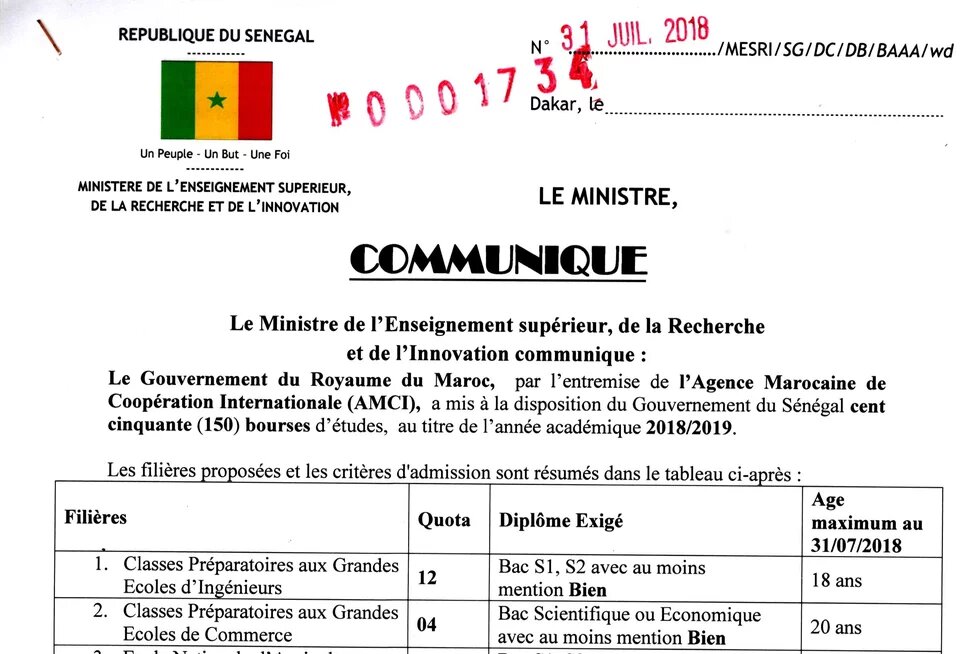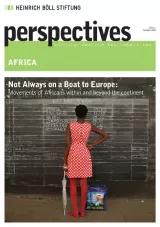Morocco is evolving from a sending and transition country into a destination for migrants. Souley Mahamadou Laouali charts the country’s efforts to attract students from sub-Saharan Africa to its institutions of higher education.

Morocco’s migration realities are changing. Already a major sending and transit country for migrants to Europe, the North African kingdom has become a destination for a small yet growing immigrant community. This is particularly true in the education sector. In the face of restrictive migration policies and high education costs in Europe, Morocco is an attractive choice for students from the African sub-continent. In 2017, the country hosted approximately 18,000 students from sub-Saharan African countries, up from just over 1,000 in 1994.[1]
Student Mobility on the Rise
Student mobility has shown an unprecedented increase over the last decade, as many institutions of higher learning actively seek to enrol international students. According to UNESCO, the number of graduating international students increased by more than 60 percent between 2005 and 2015, from 2.8 to 4.6 million. Africa accounts for about 10 percent of these students, with a mobility rate twice as high as the global average.[2]
Along with the traditional movement of students into the former colonial powers in Europe, intra-African student mobility is increasingly common. South Africa, Ghana and Morocco are major destinations, each attracting students from countries with which they share a degree of geographical, cultural and linguistic proximity.
A Deliberate Effort: Increasing Higher Education Capacities and Diplomacy
However, the growing number of sub-Saharan students at Moroccan universities is not just the outcome of incidental factors: it is the result of deliberate efforts in the country’s evolving immigration policy. Morocco was the first country in North Africa to take steps to deal with changing migration realities by, among other things, legalising irregular immigrants since 2014.
For more than ten years, Morocco has been negotiating bilateral agreements with sub-Saharan African states to facilitate scholarships and simplified visa requirements. Part of the goal of this “education diplomacy” was to improve the country’s image within the continent, following the recognition of Western Sahara by the Organisation of African Unity (OAU) and Morocco’s subsequent withdrawal from the continental body in 1984.[3] Morocco’s integration into the African Union (AU) in 2017 can be credited in part to these efforts.
To accommodate the growing number of foreign students, the government dramatically expanded the public university system. Between 1997 and 2017, the number and capacity of public universities almost doubled. The private higher-education sector experienced similar increases.[4]
Although the vast majority of students still come from francophone West Africa, Morocco is gradually opening up to the Portuguese-, Spanish- and English-speaking countries by offering intensive language courses. The sub-Saharan students themselves say that they chose Morocco because of the relatively easy access made possible by simple application procedures for residence permits and the availability of bursaries. George, a 29-year-old student from Liberia, explains: “One of the benefits of studying here is that education is completely free as opposed to English-speaking countries. I knew nothing about Morocco before, but when I heard about the bursary and the possibility to learn French, I decided to come”[5].
Economic challenges and the lack of quality education in many parts of the continent are additional push-factors. In 2017, Morocco granted about 8,000 scholarships, covering almost half of the approximately 18,000 students from sub- Saharan Africa affiliated to Moroccan universities.[6] Some receive scholarships from their countries of origin while many others rely on their families for financial support.
Social and Economic Integration
The social and economic integration of these foreign students remains a challenge. Only a minority can speak and understand Moroccan Arabic, contributing to their social isolation. Although racism is not considered a major issue, numerous students have been victims of various forms of discrimination. As Mohamed, a 25-year-old Cameroonian, expresses it: “I do not really like the fact that all Blacks are instinctively called ‘My friend’, or sometimes ... even ‘Ebola’… Worse, there are even university professors who call us ‘Africans’ as if they are not Africans themselves…I have a lot of Moroccan friends and I think that with the new generation, educated young people, things will slowly change”[7].
A 2011 study by the Organisation of Economic Cooperation and Development (OECD) reveals that only 2 percent of migrants enjoy regular employment in Morocco, although 70 percent of them hold a diploma or degree.[8] While most major host countries allow foreign students to work while studying, there is no law that specifically deals with this issue in Morocco.
Because this is a grey area, few foreign students work to supplement their incomes. However, the problem of access to employment during studies in Morocco also concerns Moroccan students. There is no widespread culture of student employment and the unemployment rate of people below the age of 24 is high, at 26.5 percent in 2017.[9] Sub-Saharan Africans who graduate are often employed in sectors that are not popular with the local population, such as call centres. The strong presence of highly qualified young adults in this industry reflects the “brain waste” to which many of them are subjected.[10] As a result, only a small minority of students plans to stay in the country after they have completed their studies. Most intend to work in their home countries or elsewhere where opportunities are available. While some Moroccan companies recruit qualified sub-Saharan managers from major Moroccan institutions for their subsidiaries on the African continent, there are few measures in place to enable their access to the labour market.
Conclusion
International student mobility is set to continue growing. By opening its universities to foreign students, Morocco is using this trend to reshape its international relations on the continent. Sub-Saharan students who have been educated in the kingdom become ambassadors of Morocco’s goodwill. The increasing number of sub-Saharan students at Moroccan universities is also a significant aspect of the migration patterns on the continent. By developing and funding entrepreneurial support programmes for sub-Saharan graduates in their countries of origin, Western donors could help grow Morocco’s bilateral efforts into triangular cooperation for the benefit of everyone.
Translated from French by Nathalie Heynderickx.
[1] Ministère de l’enseignement supérieur du Maroc (1994 à 2017): le Maroc universitaire.
[2] Les notes de campus France, La mobilité internationale des étudiants africains, HS N°16, 2017.
[3] Barre A, La politique marocaine de coopération en Afrique, essai de bilan, 1995.
[4] Ministère de l’enseignement supérieur du Maroc (1996-1997 et 2016-2017), L’enseignement supérieur privé en chiffres.
[5] Laouali S.M, Migration estudiantine subsaharienne vers le Maroc: quelles spécificités? Projet: intégration, identité et mobilité, RSSI, UMI et Heinrich Böll Stiftung, 2016.
[6] Cécile Manciaux, Les campus marocains accueillent de plus en plus d’étudiants originaires d’Afrique subsaharienne,Jeune Afrique, 2 Novembre 2017.
[7] Laouali S.M, 2016.
[8] Yousra Amrani, Politique migratoire: les ministères de l’emploi et des affaires de la migration planchent sur l’insertion professionnelle des migrants, Le Matin, 17 March 2016.
[9] Haut-commissariat au Plan du Maroc, Rapport sur la situation du marché du travail, HCP-Rabat, 2017.
[10] Polistena C, L’insertion professionnelle des migrants subsahariens diplômés au Maroc, le cas de Fès et de Meknès, L’Immigration au Maroc: les défis de l’intégration, Collection RSSI, 2017.

